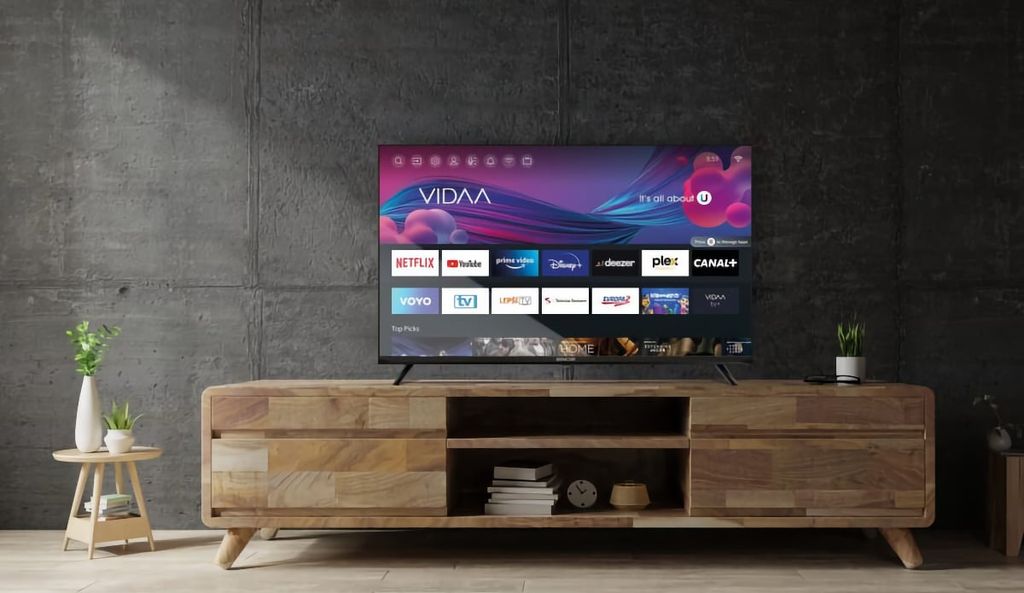- Matching (Score)
- Our verdict
- Competing TVs
- TV appearance
- Where to buy
- Contrast and black detail
- HDR effect quality
- Factory color reproduction
- Color reproduction after calibration
- Smoothness of tonal transitions
- Image scaling and smoothness of tonal transitions
- Blur and motion smoothness
- Console compatibility and gaming features
- Input lag
- Compatibility with PC
- Viewing angles
- TV efficiency during daytime
- TV features
- Apps
- Playing files from USB
- Sound
- Details about the matrix
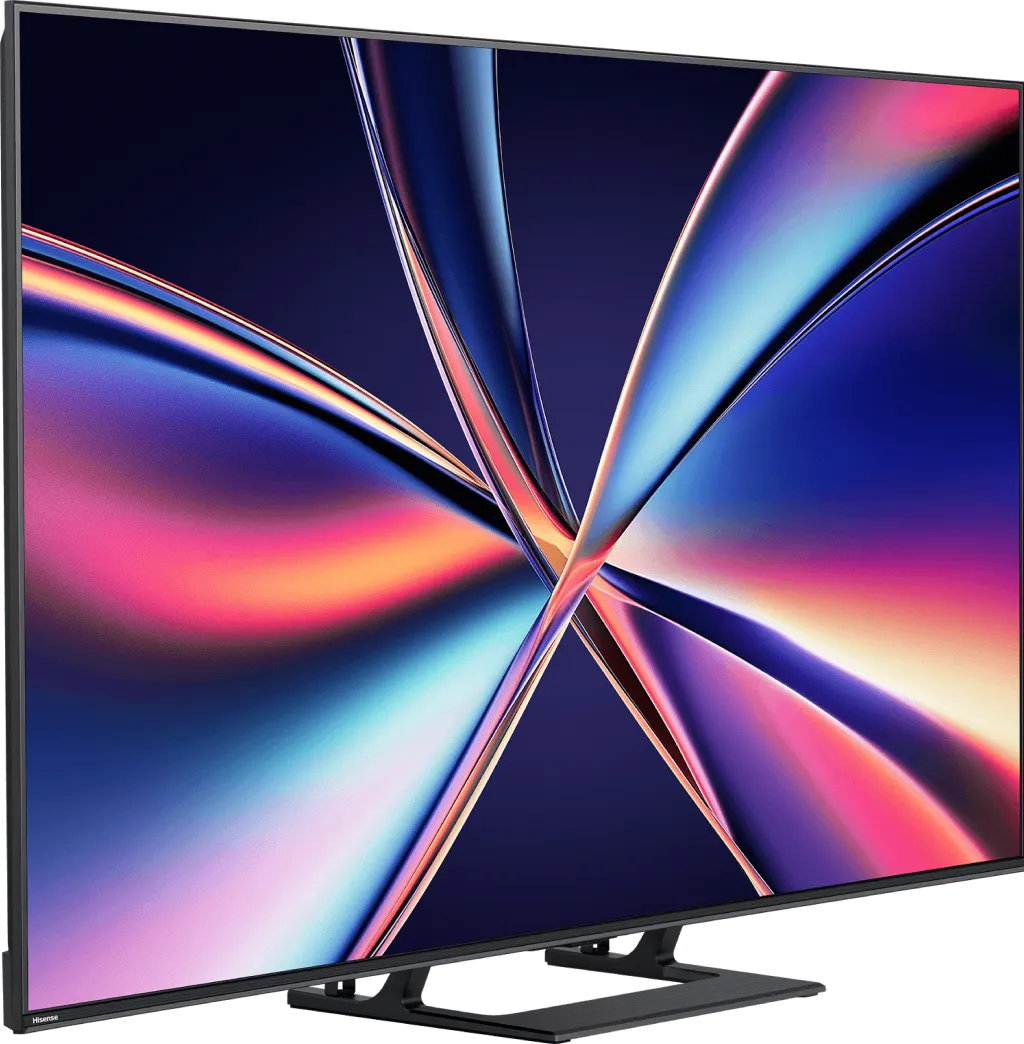
Complete the survey to find out the result
Panel type: LCD VA Odświeżanie: 144Hz Brand: HISENSE Resolution: 3840x2160 System: VIDAA Model year: 2025
The E8Q model is a television specially designed for the European market. At first glance, it looks like the well-known Hisense U7Q, which we have already had the opportunity to test – and it performed quite well. But is the E8Q just a name change and a cosmetic difference in the audio system? Or has something actually been improved... or conversely – simplified? In this review, we will check whether the E8Q offers the same level of picture and functionality as its "global" brother. We will take a look at the details of the specifications, test the image and sound quality, and see if this model is indeed tailored for the European user!
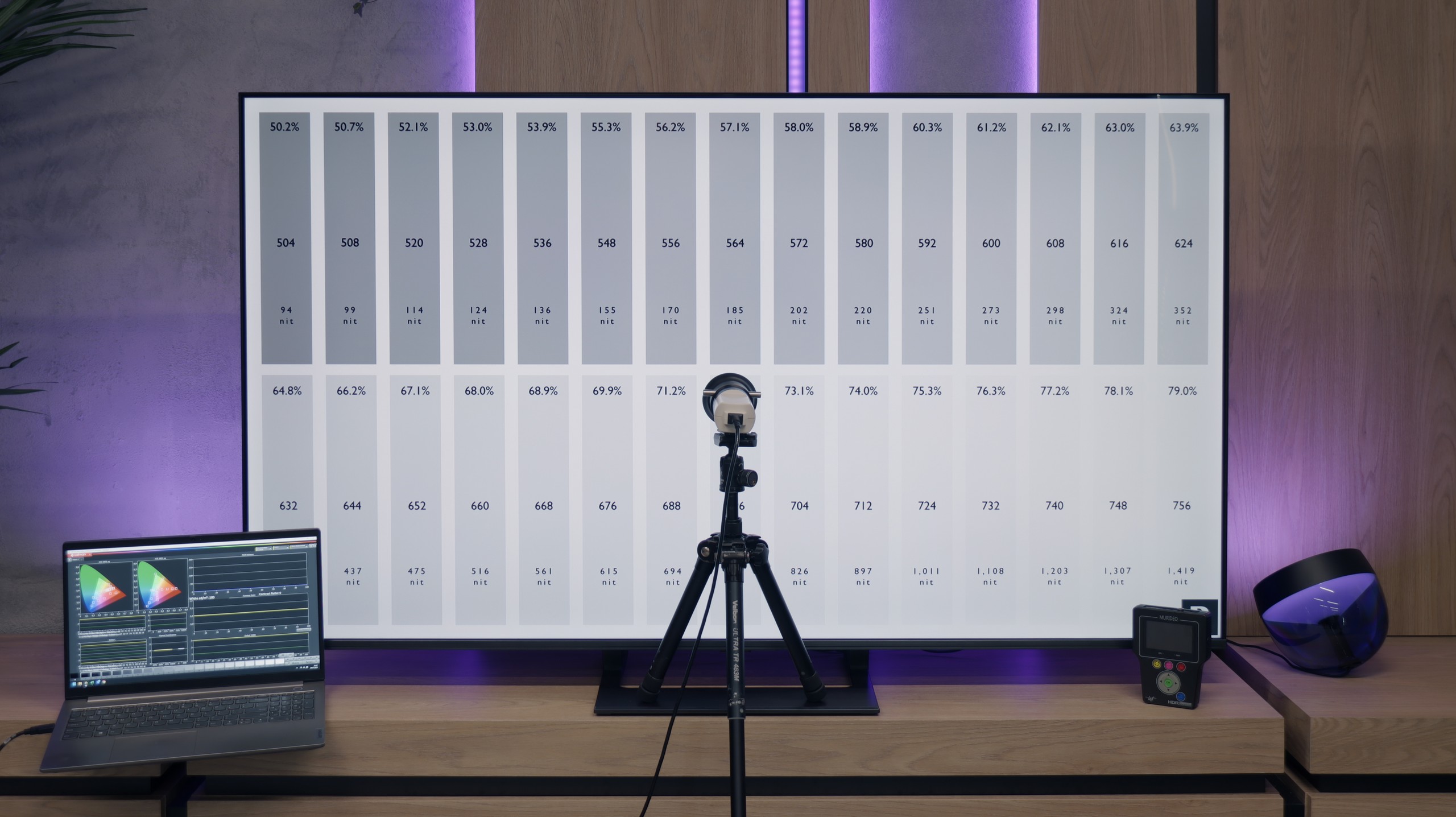
HISENSE E8Q - Our verdict
7.0
Overall rating
The Hisense E8Q is a television that clearly draws heavily from the U7Q model – and that's a good thing. After all, it is its European version, not another "diet" mutation. Just a few moments with this screen reveal that the E8Q is trying to impress. And in many ways, it really succeeds. Right off the bat – what stands out: the black is deep, the contrast is high, and the brightness exceeds the threshold that we can simply call satisfying. Let's add to that almost perfect smoothness in tonal transitions, and we have an image that looks very mature, especially for this price segment. In gaming? Just as good. It supports VRR, ALLM, 144 Hz in 4K, and even 240 Hz in Full HD – it's hard to find fault here. Well… almost. Because the E8Q has one additional flaw compared to the U7Q – the sound. In our unit, even at moderate volume levels, the back of the casing started to resonate, generating quite unpleasant crackling noises. This might be a flaw in the test sample, but since the U7Q simply performed better – it's worth noting. Especially if you find both models at a similar price. We can confidently state that the E8Q is a television that can boldly compete for the attention of those looking for a quality Mini-LED at a reasonable price. If a good deal comes along, it's definitely worth it – because we get almost the same as with the U7Q. And that means a really solid picture, excellent gaming features, and overall very good equipment that you can stick with for a long time.
Advantages
Great contrast and deep black
Very good fluidity of tonal transitions (close to reference level)
High brightness
Support for 4K 144 Hz and even 240 Hz in Full HD
VRR, ALLM, G-SYNC – a complete package for gamers
Low input lag
Many classic TV features built into the VIDAA system
Disadvantages
No support for HGiG (makes HDR setup difficult on consoles)
U7Q
Movies and series in UHD quality
6.6
Classic TV, YouTube
6.8
Sports broadcasts (TV and apps)
6.5
Gaming on console
8.0
TV as a computer monitor
8.6
Watching in bright light
6.2
Utility functions
8.9
Apps
7.7
Sound quality
5.5
Complete the survey to find out what fits your preferences
HISENSE E8Q - Competing TVs in this price range
HISENSE E8Q - TV appearance
HDMI inputs: 2 x HDMI 2.0, 2 x HDMI 2.1 (48Gbps) Other inputs: RCA (Chinch) Outputs: Toslink (Optical audio), eARC (HDMI), ARC (HDMI), Mini-Jack (Headphones) Network Interfaces: Wi-Fi 2.4GHz, Wi-Fi 5GHz, Ethernet (LAN) 100Mbps
Build quality: Good
Stand type: Central
Kolor ramki: Graphite
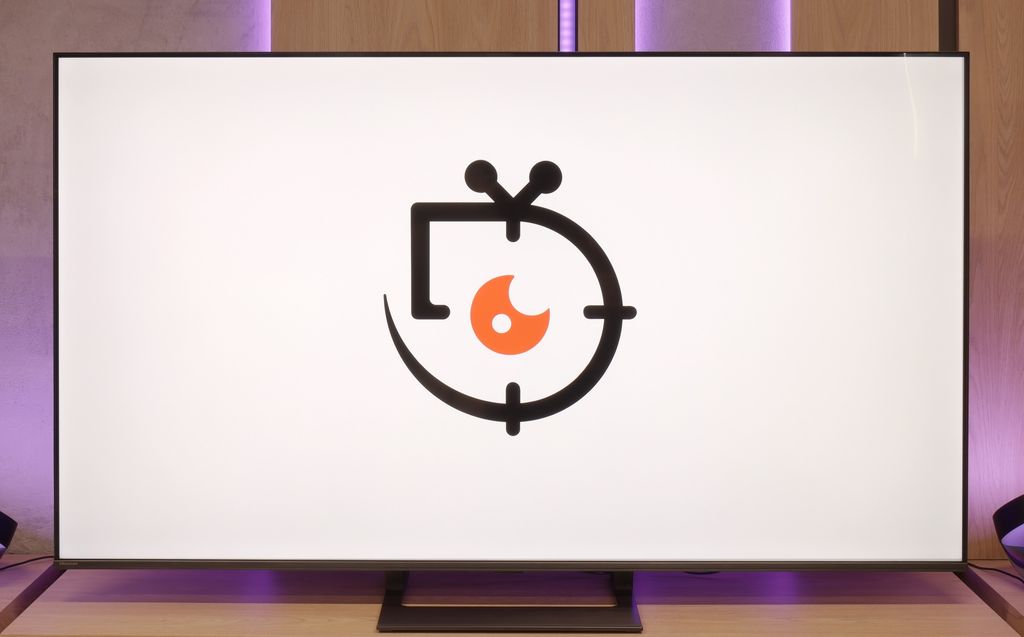
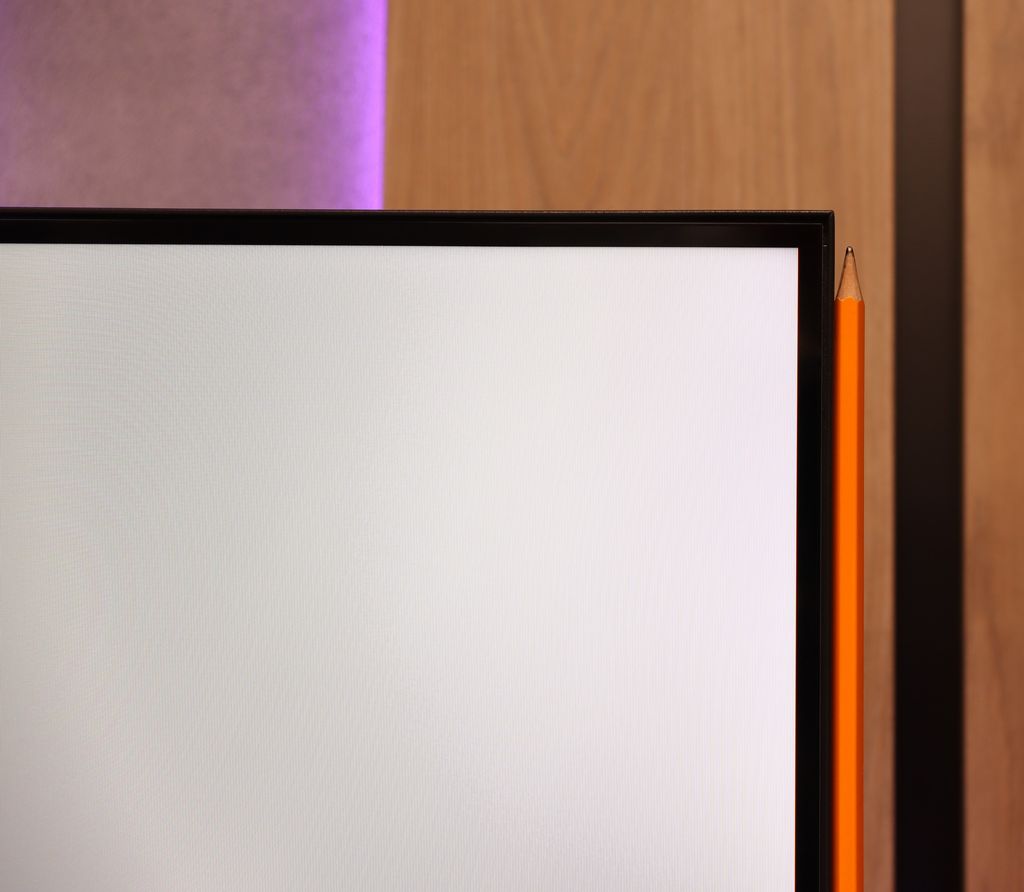
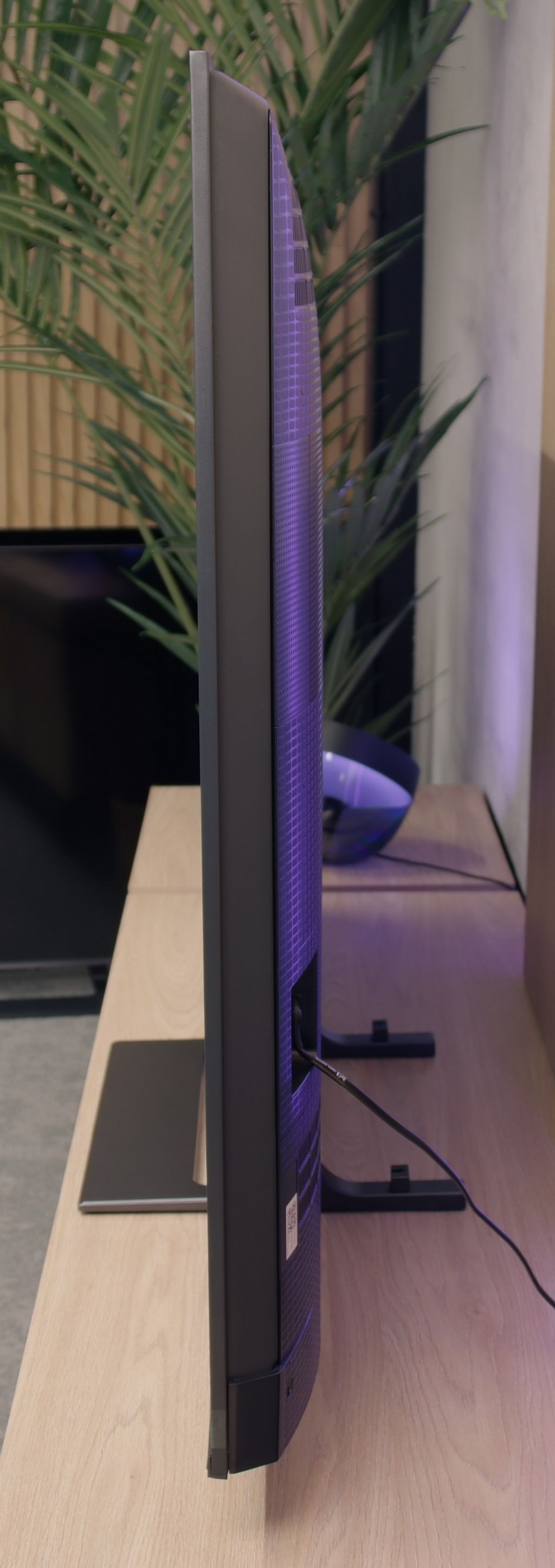
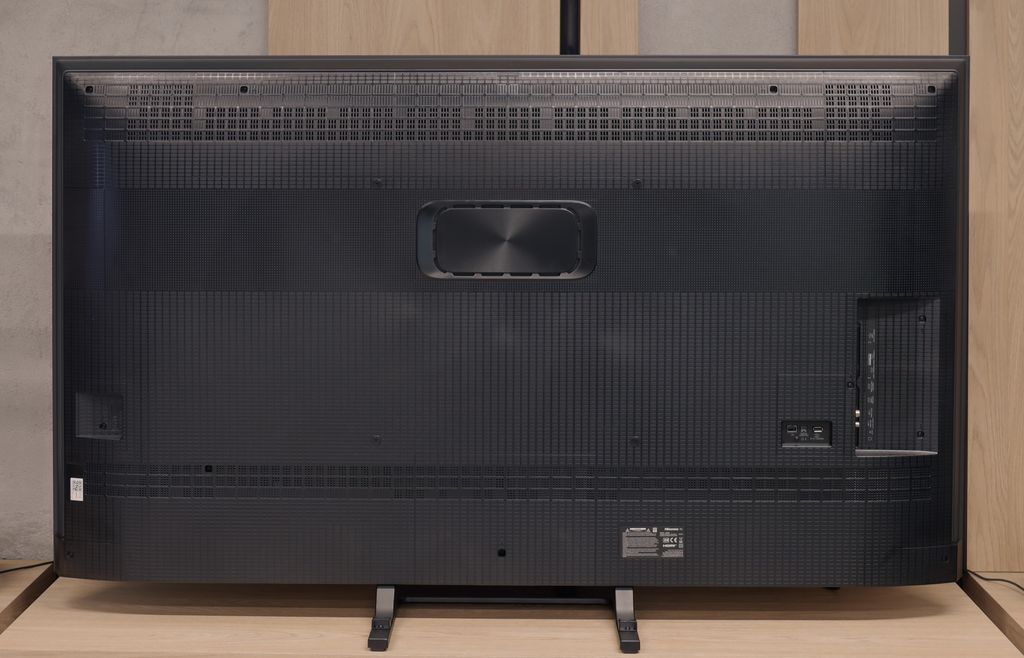
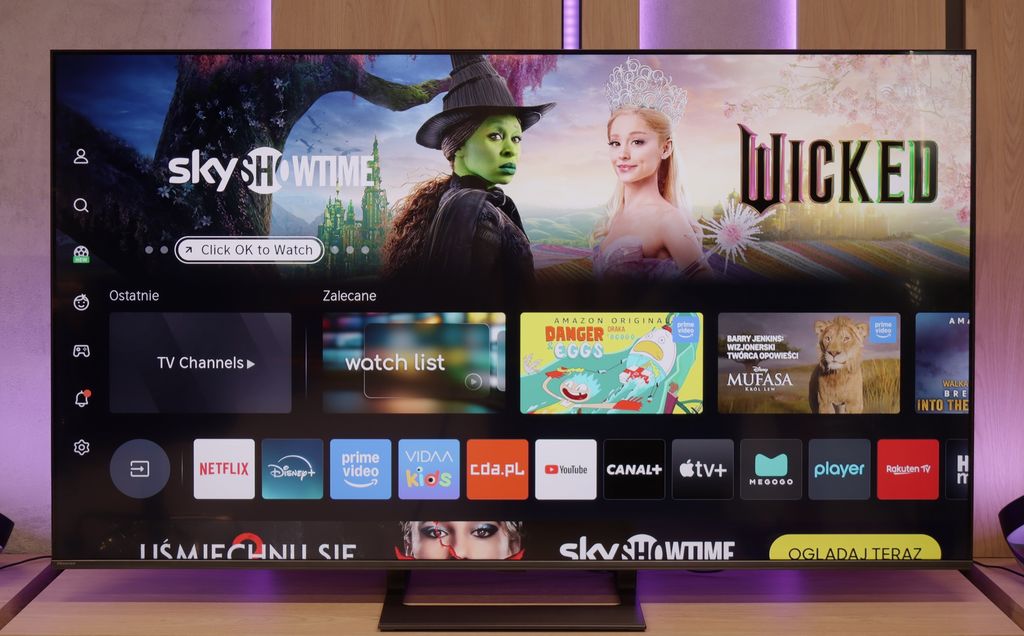
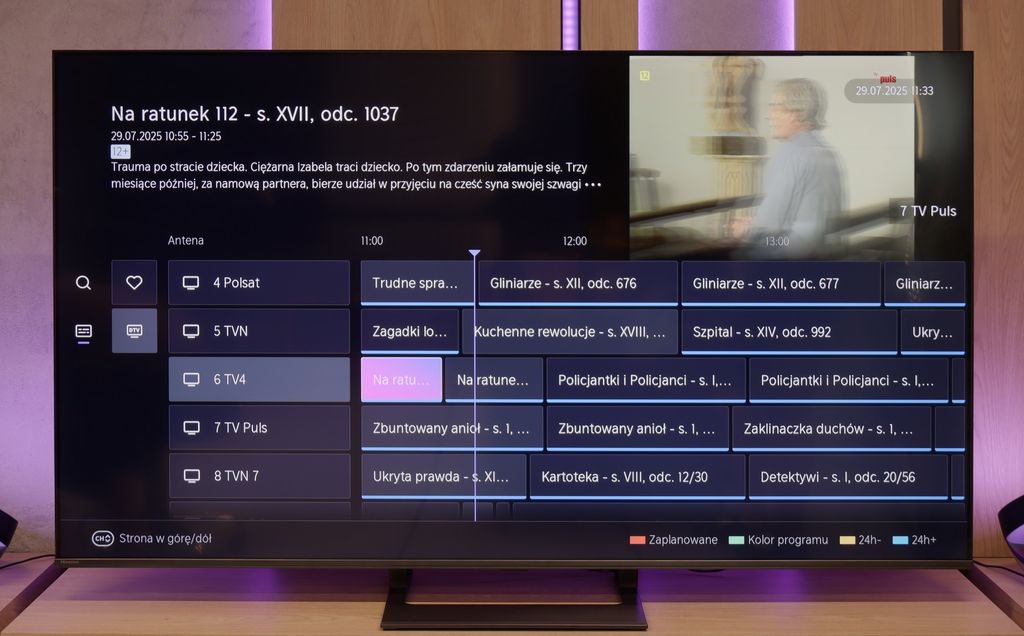
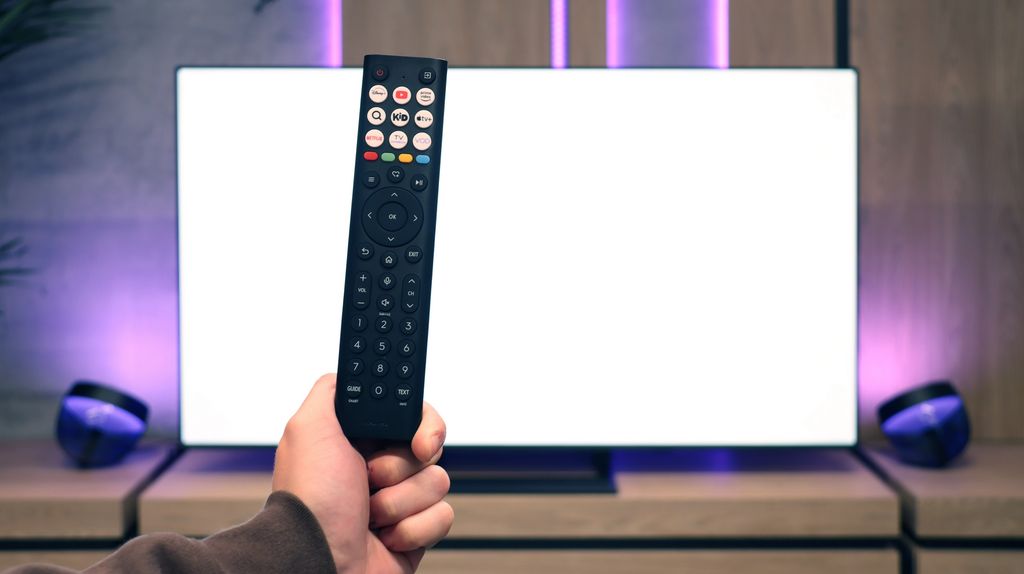

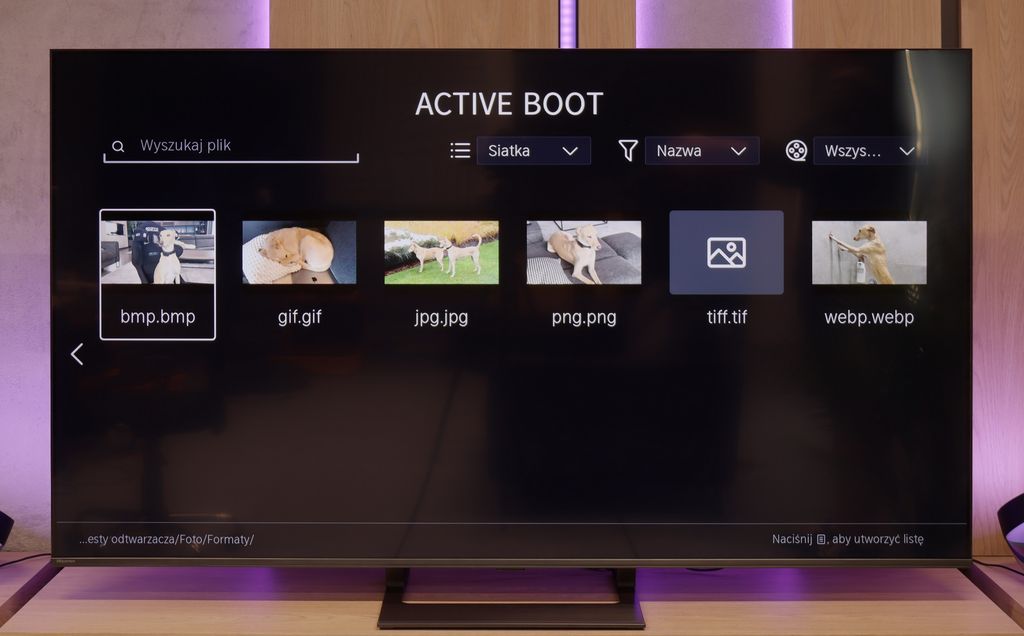
- Regulacja podstawy: stand-Fixed
- Montaż na płasko: Nie
- Akcesoria: accessories-Stand
The Hisense E8Q is a television that simply looks good. It's not the slimmest model on the market, but its classic shape has something pleasing to the eye. The bezels are narrow, the shapes are subdued, and the whole thing gives a solid impression – both visually and structurally. If you've already encountered the U7Q model, then... you'll feel a sense of déjà vu. Both televisions are almost identical from the outside – the only noticeable difference is the slightly different shade of the central stand. Is it dark graphite or perhaps light black? It's hard to say – tests are prepared by a group of men, so distinguishing subtle variations in shades of black is a bigger challenge for us than evaluating the screen's contrast😉.
Buy in the best price
Select size:
HISENSE E8Q - Contrast and black detail
7.6/10
Local dimming function: Yes, number of zones: 220 (10 x 22)

Result
277,000:1

Result
43,700:1

Result
15,750:1

Result
8,850:1

Result
6,350:1
Visibility of details in the lights:
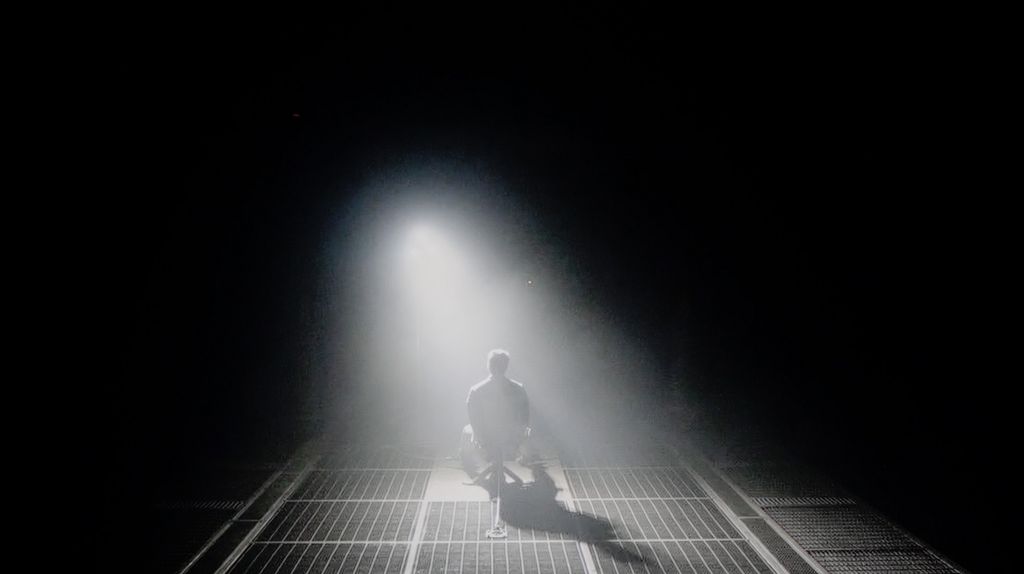
Similarly to the U7Q, the E8Q model uses a VA panel and Mini-LED backlighting. The number of dimming zones also remains at a very similar level – in the 65-inch variant we tested, we counted 220 zones, which is exactly the same as in the U7Q. On paper, this looks really good for this price segment, but even better – in practice. The contrast is high, and black can be really deep. In many scenes, the lights are clearly separated, and the image gains in spaciousness. This is one of those cases where Mini-LED shows it can approach the quality of OLEDs – provided that we are aware of the limitations we need to consider. In very difficult scenes, there may be slight lightening or minor halo effects around bright objects, but these are phenomena typical of this technology and are not very noticeable. Ultimately – the contrast and blacks in the E8Q are really solid, almost identical to those in the U7Q model. It’s hard to find fault with this, especially when we look at the price of the television.
HISENSE E8Q - HDR effect quality
4.3/10
Supported formats: HDR10, HDR10+, Dolby Vision, Dolby Vision IQ, HLG Color gamut coverage: DCI P3: 93.3%, Bt.2020: 71.9%
Luminance measurements in HDR:

Result
531 nit

Result
148 nit

Result
320 nit

Result
100 nit

Result
625 nit
Since the E8Q is a twin of the U7Q, it’s no surprise that the quality of the HDR effect is almost identical. On paper, it looks promising – a peak brightness of 800 nits can impress in many scenes. Fragments like the flashes of light in “The Meg” or shots of the sun in “Life of Pi” can indeed evoke a “wow” effect. But the longer we watch, the more we notice the limitations. The problem arises when small, bright details are supposed to be displayed on a dark background. In such situations, the dimming algorithms try to preserve contrast but end up dimming what should shine the brightest. Instead of dazzling details, we get almost invisible points of light. This is typical for Mini-LED in this price segment and is not surprising – but it’s worth knowing that the HDR effect won't always be fully preserved. Fortunately, the color reproduction offers reasons to be satisfied. A coverage of the DCI-P3 color gamut at around 94% is a very good result, and the applied quantum dot layer (more specifically, PFS) does its job – colors are saturated and vibrant, especially with 4K content.
Scene from the movie “Pan” (about 2800 nits)

Scene from the movie “Billy Lynn” (about 1100 nits)

Similar to the U7Q model, the E8Q does not impress when it comes to faithful reproduction of HDR content in the most challenging conditions. The image can be somewhat too bright, leading to a loss of color depth and slight discoloration. Nevertheless, we are positively surprised – even in scenes prepared with the highest image quality (like those from Billy Lynn's Long Halftime Walk or The Gentleman), the television does not lose essential details. Bright elements can be overexposed, and colors are less saturated, but despite this, the overall reception remains at an acceptable level. Unfortunately, as with the twin model, the HDR dynamic tone mapping feature does not help here – instead of improving the effect, it further enhances brightness, which disturbs the balance of scenes even more. It is definitely worth turning it off if we care about a more natural image.
HDR luminance chart:
Luminancja HDR
Luminance of RGB colors
The Hisense E8Q, like most of this year's models from this brand, supports all popular HDR formats – from basic HDR10, through HDR10+, to Dolby Vision. And that's good because the differences are really noticeable. When we compared the same scene – once in HDR10 and then in Dolby Vision – the effect was completely different. Our favorite test with horses immediately showed the advantage of Dolby Vision. The picture had better depth, the background was not washed out, and details in the shadows did not disappear. Even the color palette looked more natural. Let's not kid ourselves – the E8Q won't extract the maximum from every material, but with good execution and dynamic metadata, it can really surprise positively. If you have the choice – it's always worth watching in Dolby Vision. And since most streaming platforms already support it, there shouldn't be any problem.
Static HDR10

Dynamic: Dolby Vision

Factory color reproduction
6.5/10
Testing the Hisense E8Q in Filmmaker mode, we were hoping for a neutral image close to the director's vision. Unfortunately - although on paper it doesn't look bad (the color reproduction errors are not significant), in practice the image feels somewhat unnatural. The reason? Too strong an increase in blue and a lack of red in the white balance. The effect? The scenes look cool, and the white appears slightly bluish. Alongside the U7Q model, we also noticed a specific approach to brightness management here. The brightness reproduction curve for HDR content (EOTF) shows that the TV can significantly dim small, bright elements of the screen to maintain contrast - but sometimes it goes too far. On the other hand, it can excessively brighten larger, very bright parts, which disrupts tonal balance. This is a compromise that may not suit everyone – especially if you want an as faithful image as possible right out of the box.
Color reproduction after calibration
7.4/10
The calibration of the Movie mode brought really good results, especially regarding SDR content. The white balance was successfully adjusted, which gave the image a natural look – it appeared almost reference-level. The colors were well-saturated, and the overall perception of the content improved significantly. Unfortunately, when we moved to HDR materials, the well-known problems from the U7Q model returned. The TV still tends to “do things its own way,” which is evident from the analysis of the EOTF brightness characteristic – despite calibration, the E8Q still dimmed small details in the shadows, while the bright areas of the screen could sometimes be excessively boosted. In practice, this means that in darker scenes, some of the tiniest details could simply disappear. Although it must be admitted that the entire calibration process brought a lot of good, not everything can be circumvented – even with the use of professional tools. The E8Q can impress with its picture, but in HDR content, its design limitations become noticeable, and it is worth keeping this in mind.


HISENSE E8Q - Smoothness of tonal transitions
9.9/10
In this category, the Hisense E8Q truly shows its class. The transitions between colors are very smooth, with no "banding" or clear boundaries between tones. The image looks natural, and the color gradient is exceptionally well-executed – even in more difficult scenes. If there are any minor imperfections, they are subtle enough that they don't stand out. It's hard to find fault here – it looks almost exemplary.


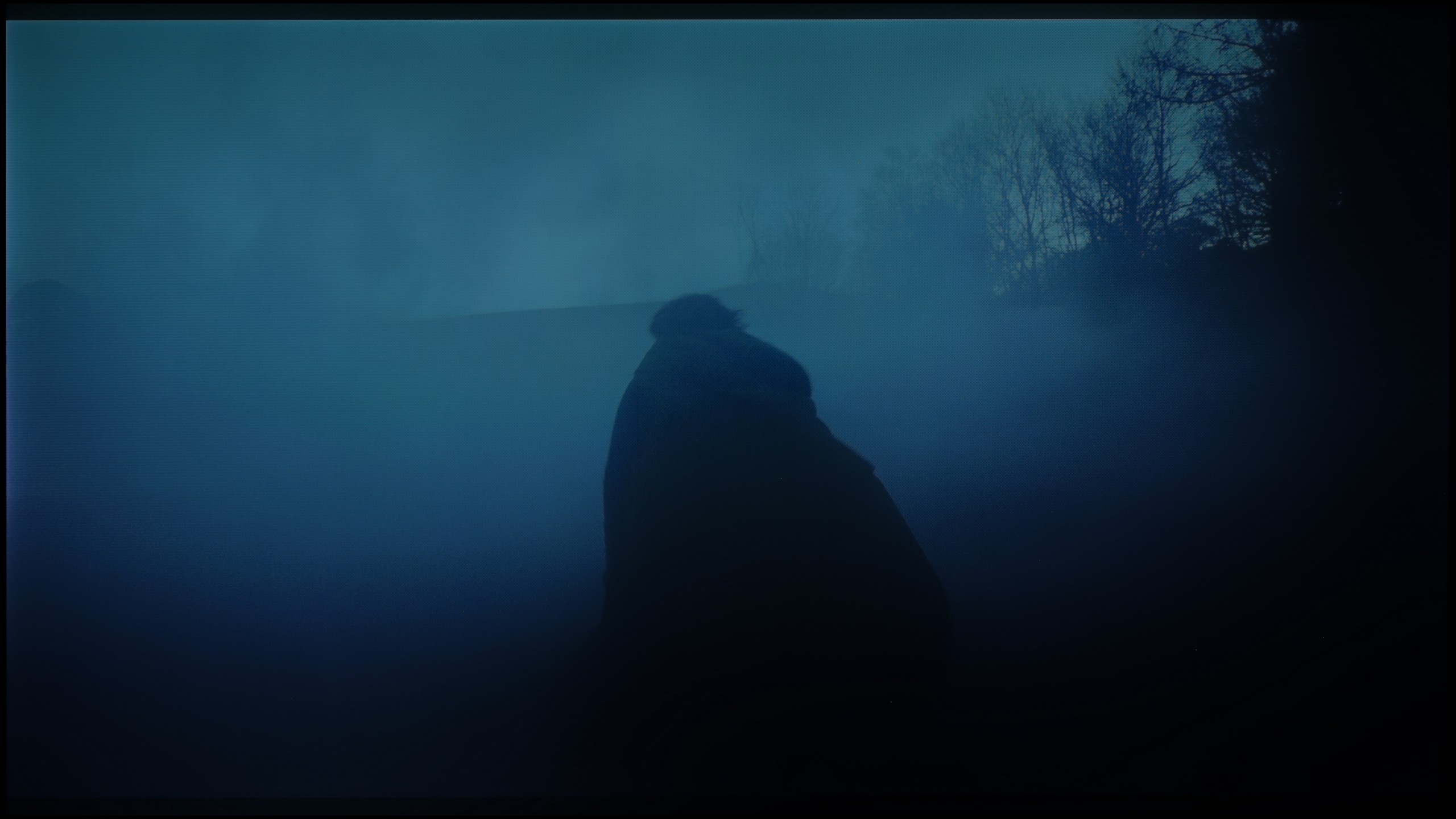
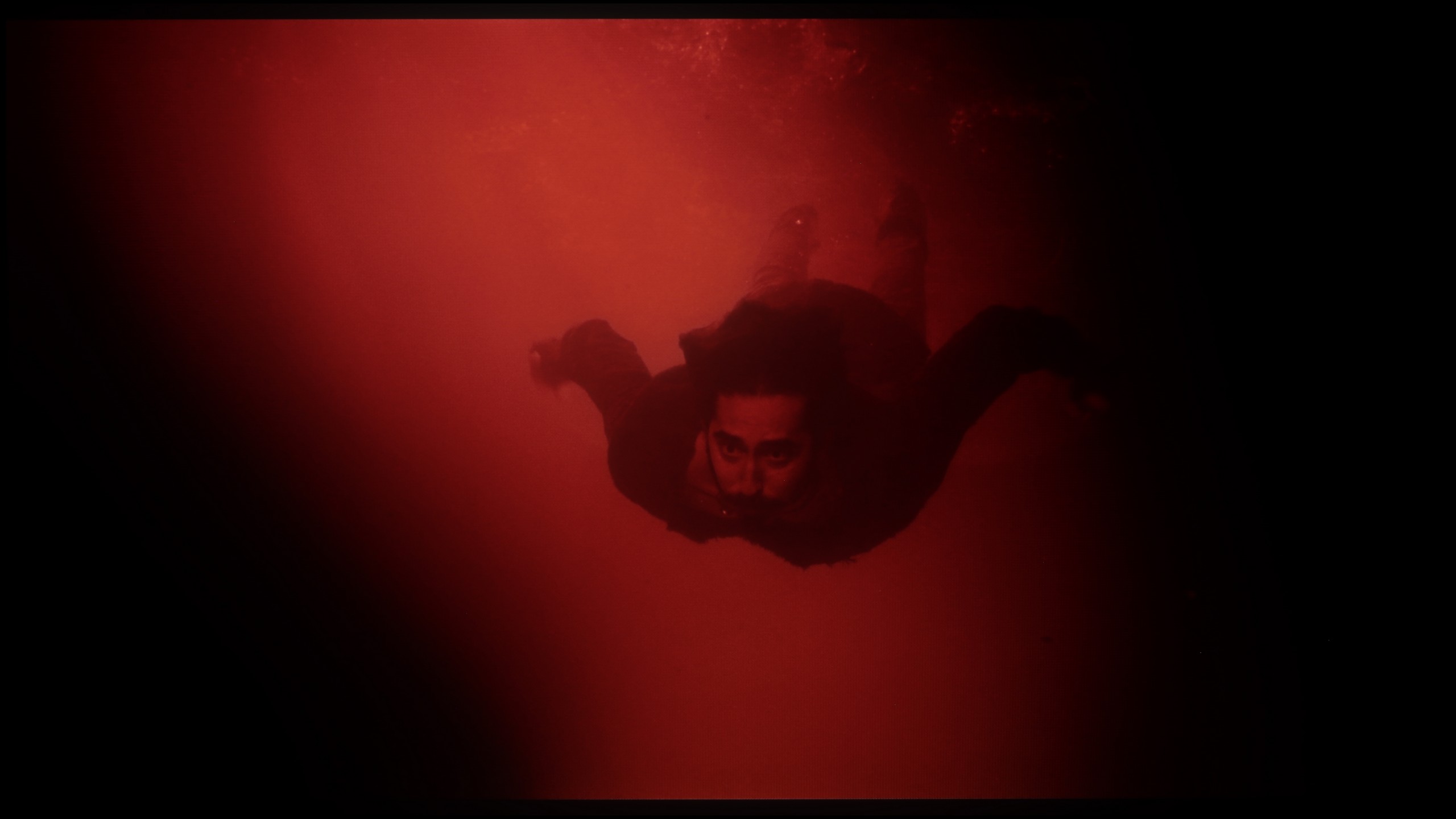




Image scaling and smoothness of tonal transitions
6/10
Smooth transition function
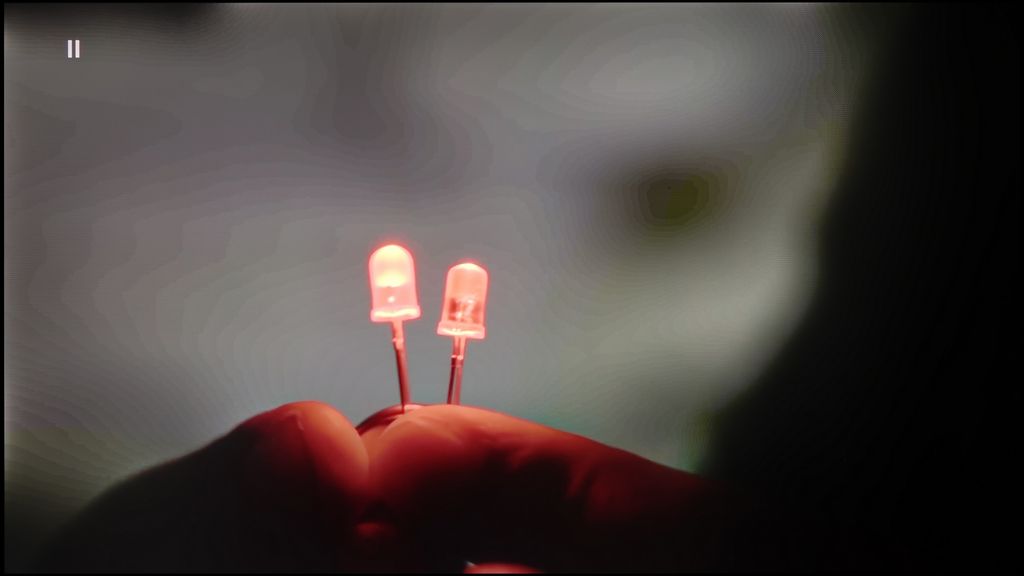
Image without overscan on the SD signal

In the case of older materials with lower quality, a gentle smoothing of tonal transitions is often useful. The Hisense E8Q, like the U7Q, has the "Smooth and Gradient Picture" feature, but unfortunately, its effectiveness leaves much to be desired. The “Low” setting is almost imperceptible in operation, while higher settings simply blur details instead of improving transitions. The good news is that the feature does not compromise the film grain, which allows it to maintain the image structure. On the plus side, the scaling is commendable. The television can fairly sensibly transform older content to a higher resolution—without artificially emphasizing contours or excessive sharpening. Though it does not match the best models in this category, it performs quite well for its class.
HISENSE E8Q - Blur and motion smoothness
7.5/10
Maximum refresh rate of the panel: 144Hz
Film motion smoothing option: Yes
Blur reduction option: Yes
BFI function 60Hz: Yes, 120Hz (double contours)
BFI function 120Hz: Yes, 240Hz (double contours)
Brightness drop with BFI: 76%
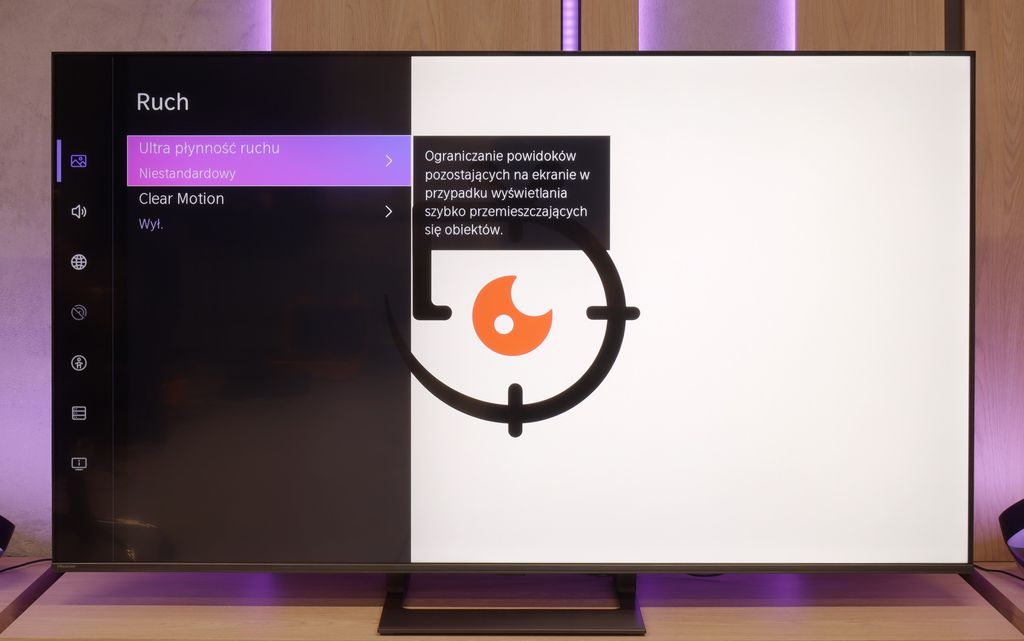
Like the U7Q, the E8Q model is a fast television designed for dynamic content. It supports 144 Hz refresh rates in 4K resolution, and if for some reason someone is still gaming in Full HD, it can achieve even 240 Hz. This is a significant advantage, especially for PC users looking for maximum fluidity. In everyday use, the television performs very well. The "Ultra Motion Smoothness" mode provides us with two sliders, allowing for personalized image settings – whether it’s more cinematic with preserved film frames or heavily smoothed, almost "series-like." It’s good that the manufacturer gives a choice here instead of imposing one style. On sports materials, live broadcasts, or in games – motion appears clean and stable. Sure, it’s not at the level of OLEDs, but for this price range, the E8Q performs really well.
Blur (native resolution, maximum refresh rate):
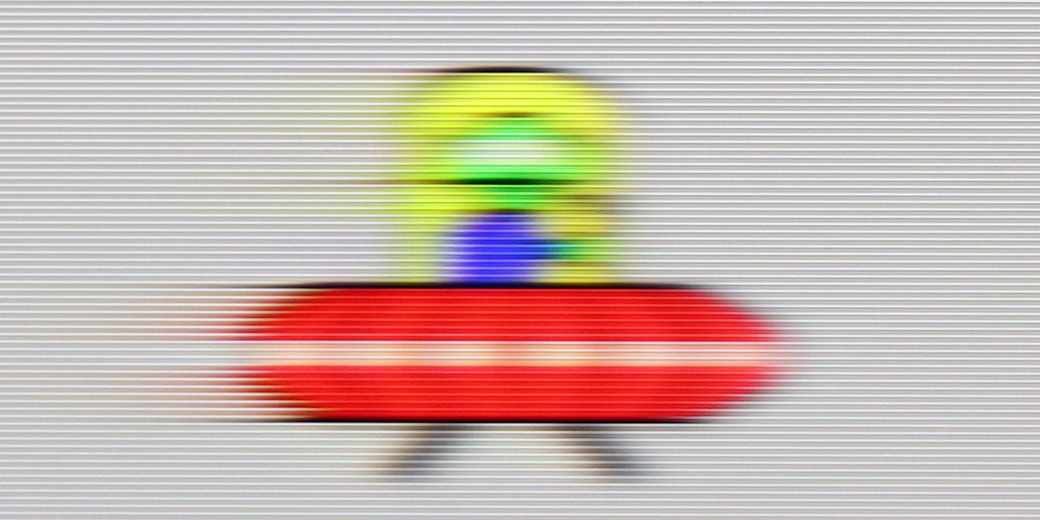
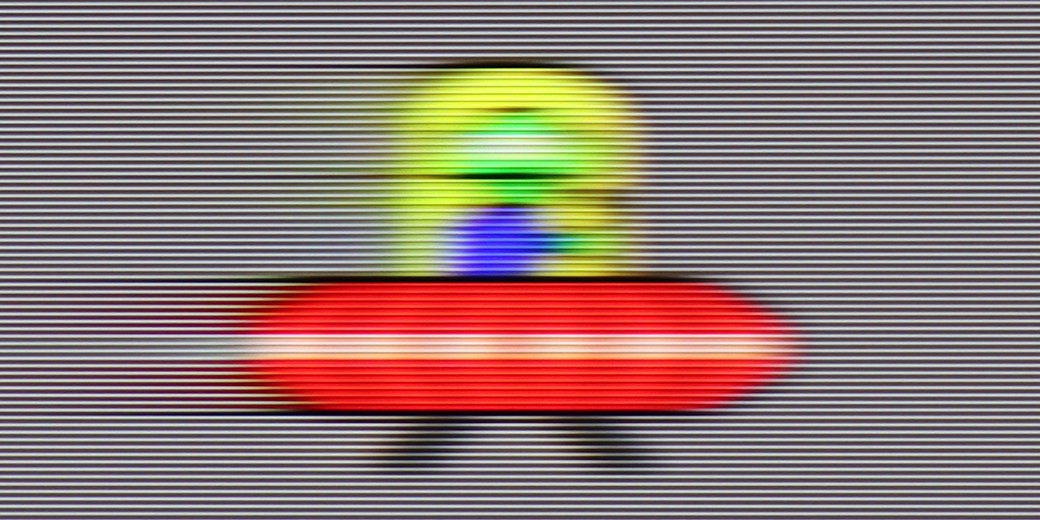

Blur (BFI function enabled):



Smużenie (4K 120Hz):
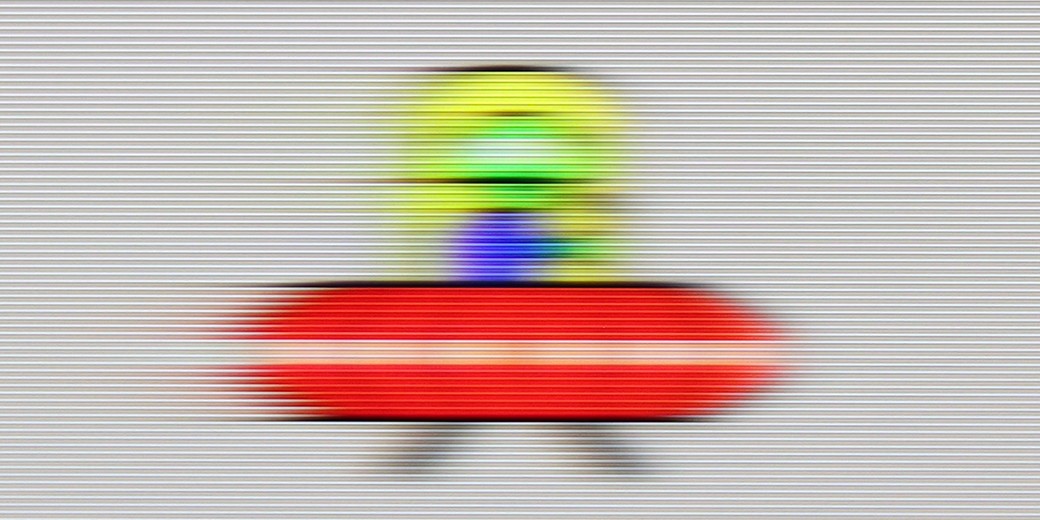
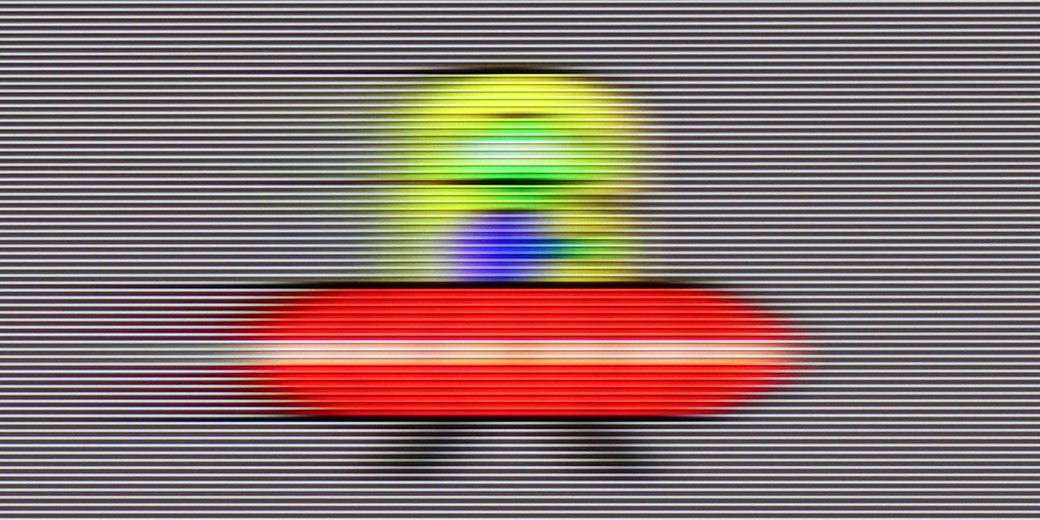
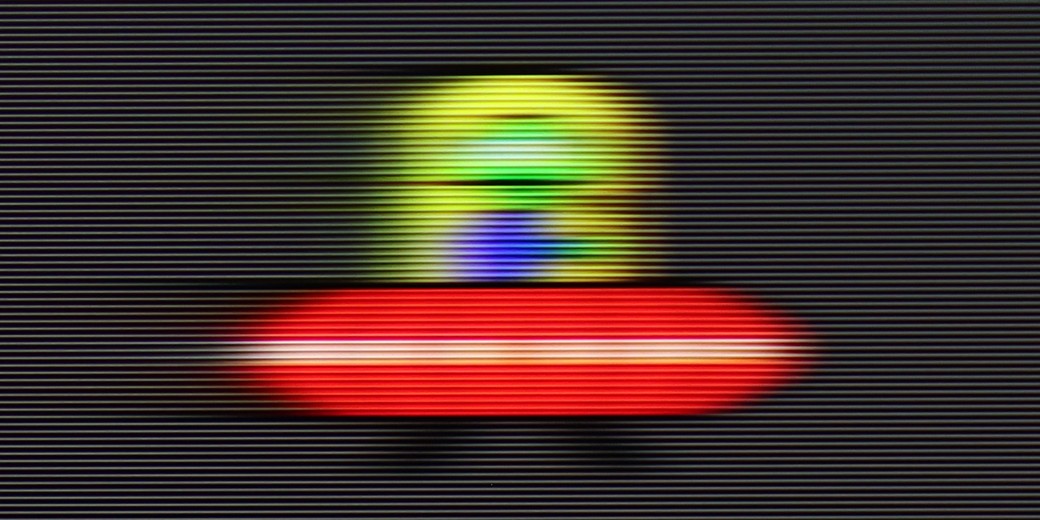
E8Q, similar to the previously tested U7Q, handles motion blur quite decently – though it is not completely free of this phenomenon. In darker scenes, one can sometimes notice a slight "pulling" of moving objects, but these are not issues that stand out during regular viewing. In our standard UFO test (that is, the classic "ufoldik"), with materials at 120 and 240 Hz, the image was clear, without noticeable artifacts or serious distortions. It is smooth, yet sharp. E8Q also offers a BFI feature, which inserts black frames that can theoretically further improve motion sharpness. In practice – as usual – this comes with a significant drop in brightness and a flicker effect. Additionally, there is edge blurring. It can be checked out out of curiosity, but in the long run, few people are likely to make use of this option.
HISENSE E8Q - Console compatibility and gaming features
8.5/10
ALLM: Yes
VRR: Yes
VRR range: 48 - 240Hz
Dolby Vision Game Mode: Yes
Correct implementation of HGIG: No
1080p@120Hz: Yes
1440p@120Hz: Yes
4K@120Hz: Yes
Game bar: Yes

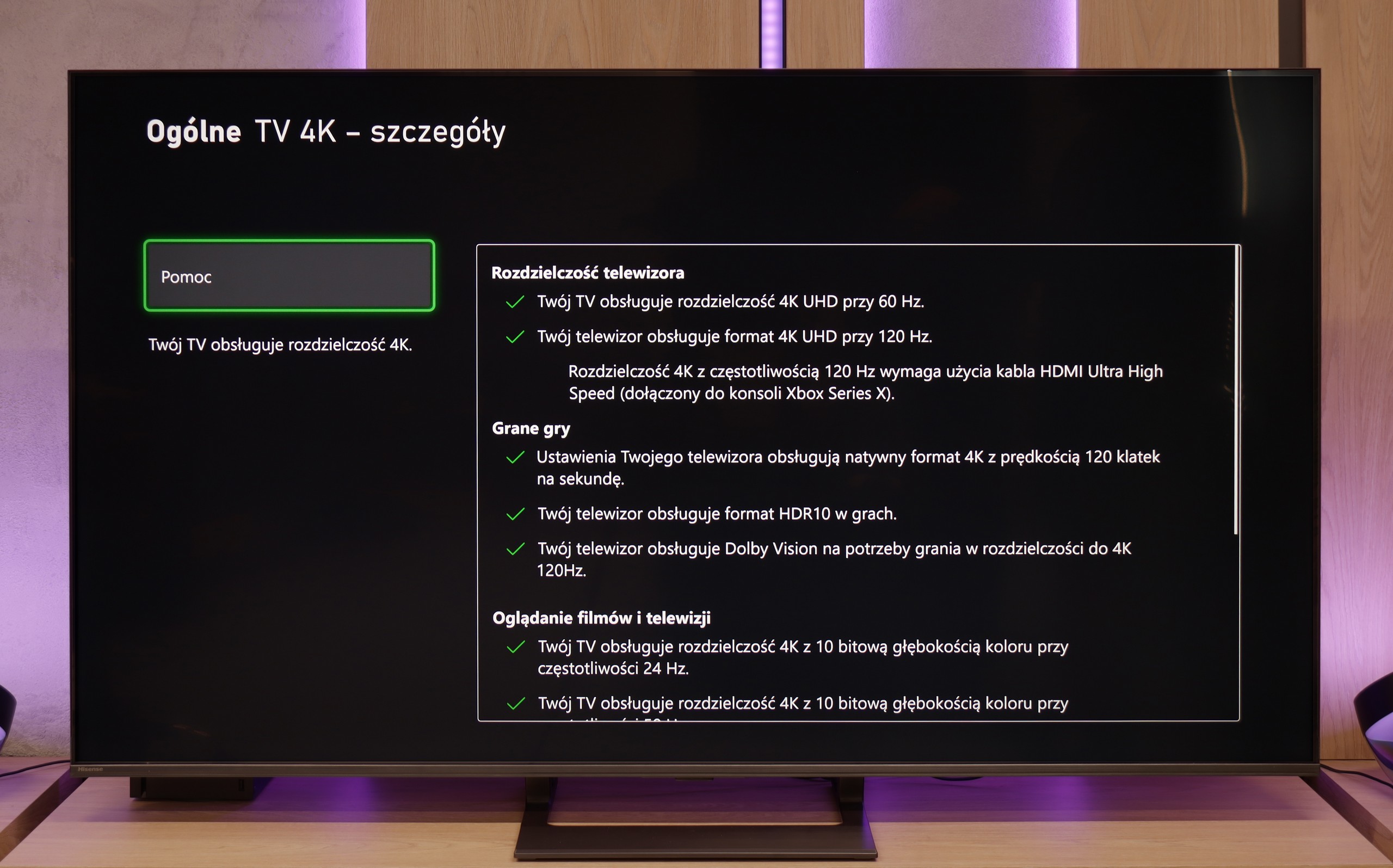
The Hisense E8Q does not hide its gaming pedigree. The specification alone reveals that we are dealing with a television that will work great as a gaming screen. Variable Refresh Rate (VRR)? Yes. Automatic low latency mode (ALLM)? It's there too. Additionally, there is impressive refreshment – 120 Hz in 4K or even 240 Hz in Full HD. Such a set is rare in this price segment. Everything works smoothly and without major surprises. The only missing element – like in the U7Q – remains support for HGiG. It's a pity, because this feature makes it easier to match the brightness curve to the capabilities of a particular television, improving visual consistency with the intentions of HDR game creators. Without it, one has to manually tweak the settings, which does not always yield a satisfying result.
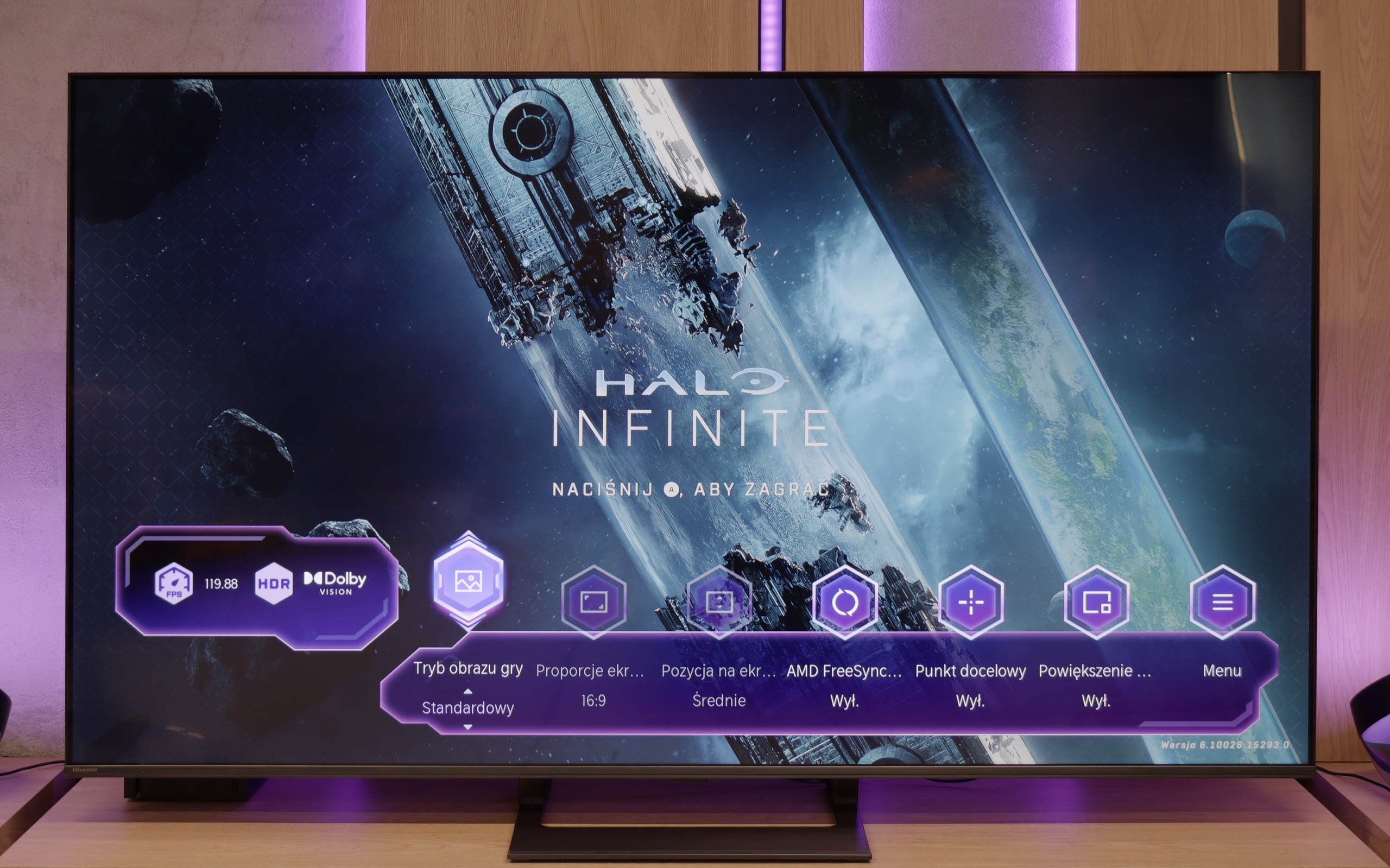


HISENSE E8Q - Input lag
9.7/10
The E8Q handles delays very well. For 120 Hz content, the input lag is super low – practically unnoticeable even for more demanding gamers. At 60 Hz, the values are a bit higher, but still comfortably within the "placebo" range – there's nothing to complain about. The biggest increase in lag was noted in Dolby Vision Gaming mode. The TV needs more time to process the signal in this mode, but even then, it does not exceed 30 ms. While these may not be perfect values, they won't pose any obstacles for most gamers – especially console gamers.
| SDR | HDR | Dolby Vision |
|---|---|---|
| 1080p60: 18 ms | 2160p60: 17 ms | 2160p60 DV: 27 ms |
| 1080p120: 9 ms | 2160p120: 8 ms | 2160p120 DV: 19 ms |
| 2160p60: 18 ms | ||
| 2160p120: 9 ms |

HISENSE E8Q - Compatibility with PC
8.6/10
Chroma 444 (maximum resolution and refresh rate): Yes
Font clarity: Good
Readability of dark text and shapes: Good
Input lag in PC mode (4K, maximum refresh rate): 9ms
Matrix subpixel arrangement: BGR
Max refresh rate: 144Hz
G-Sync: Yes
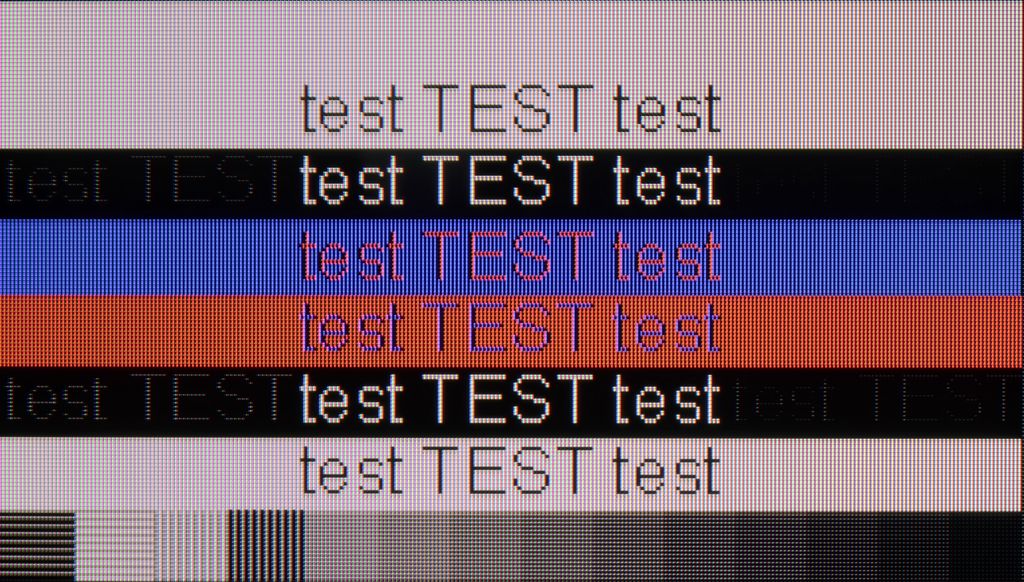
In terms of collaboration with the computer, the E8Q performs really well. It supports chroma 4:4:4 at full 4K resolution and at the highest refresh rate, so the readability of fonts – even the smallest ones – is at a very good level. There are minor blurriness issues with exceptionally thin fonts, but in everyday use, this is hard to consider a serious problem. A nice addition for PC gamers is the ability to achieve up to 288 Hz at lower resolutions. The E8Q communicates effortlessly with powerful graphics cards, making it an interesting choice not only for movies or consoles but also for gaming on a computer.
HISENSE E8Q - Viewing angles
3/10
Brightness drop at an angle of 45 degrees: 79%
E8Q, like most TVs with a VA panel, looks best when we sit directly in front of the screen. In this position, one can count on deep blacks, good color saturation, and high contrast. Unfortunately, just moving slightly to the side causes the picture quality to suffer – colors start to fade, and blacks become more gray than black. This isn't surprising, but it's worth keeping in mind, especially if we plan to watch in a larger group from different positions in the living room. As a consolation – in return, we get significantly better black levels than with IPS panels.
HISENSE E8Q - TV efficiency during daytime
6.2/10


Matrix coating: Satin
Reflection suppression: Good
Black levels during daytime: Good
The Hisense E8Q is not afraid of bright interiors. Even when the full sun is shining outside, the television can maintain good image clarity. A brightness level of around 500 nits ensures that you can comfortably watch content during the day, without feeling that everything is drowning in glare. The satin screen coating also helps to pleasantly reduce reflections – it doesn't eliminate them completely, but limits them enough that they don't interfere with everyday viewing.
Matrix brightness
Average luminance SDR
Hisense E8Q: 504 cd/m2
HISENSE E8Q - TV features
8.9/10
System: VIDAA
System performance: Good
- HDMI inputs: 2 x HDMI 2.0, 2 x HDMI 2.1 48Gbps
- Other inputs: RCA (Chinch)
- Outputs: Toslink (Optical audio), eARC (HDMI), ARC (HDMI), Mini-Jack (Headphones)
- Network Interfaces: Wi-Fi 2.4GHz, Wi-Fi 5GHz, Ethernet (LAN) 100Mbps
- TV reception: DVB-T, DVB-T2, DVB-S, DVB-S2, DVB-C
Classic features:
Recording to USB (terrestrial TV): Yes
Recording programming: Yes
Picture in Picture (PiP): No
RF remote control (no need to aim at the screen): RF
Backlit remote control: No
Teletext: Yes
Audio only mode: Yes
Possibility to connect Bluetooth headphones to the TV: Yes
Possibility to simultaneously use Bluetooth headphones and the TV speaker: Yes
Smart features:
AirPlay: Yes
Screen mirroring (Windows Miracast): Yes
Wyszukiwanie głosowe: No
Voice search in native language: Yes
Ability to connect a keyboard and mouse: Yes








Classic Features – E8Q
The Hisense E8Q is not only equipment for gamers or movie enthusiasts – it can also serve as a daily television for the entire family. We can record programs to USB, connect headphones or speakers via Bluetooth, and the entire interface – including the channel guide – is clear and easy to use. It only lacks the PiP function, but aside from that, the set of classic features is truly complete.
Smart TV – VIDAA System
The E8Q runs on the VIDAA system, which is becoming more refined year by year. Voice search in Polish works flawlessly, and it's easy to cast from your phone (AirPlay and screen mirroring). The system operates smoothly, without any hiccups, although – as is often the case with closed platforms – there may occasionally be one or two less popular apps missing. Therefore, it’s worth checking before purchase to see if everything we use daily is available there.
HISENSE E8Q - Apps
7.7/10























HISENSE E8Q - Playing files from USB
8.2/10

| Maximum photo resolution: | Supported photo formats: |
|---|---|
The built-in media player in E8Q performs quite well. It supports most popular video and audio formats, and files from USB drives or external disks play without major issues. Polish characters? They are supported. Subtitles? They work. The only minor drawback is the occasional problem with displaying high-resolution images – especially those from cameras or smartphones. So if you plan to show vacation photos on a large screen, it’s worth checking in advance whether they will all load correctly from the drive’s memory or USB stick.
HISENSE E8Q - Sound
5.5/10
5.5/10
Subjective sound quality
Supported codecs
(TV speakers)
Dolby Digital Plus 7.1
Dolby True HD 7.1
Dolby Atmos in Dolby Digital Plus (JOC)
Dolby Atmos in Dolby True HD
DTS:X in DTS-HD MA
DTS-HD Master Audio
Supported codecs
(external HDMI eARC audio)
Dolby Digital Plus 7.1
Dolby True HD 7.1
Dolby Atmos in Dolby Digital Plus (JOC)
Dolby Atmos in Dolby True HD
DTS:X in DTS-HD MA
DTS-HD Master Audio
Unfortunately, the Hisense E8Q did not leave the best impression on us. Although on paper it has speakers with a power of 40 W (which is only slightly less than the 50 W in the U7Q), in practice, the difference is significant—and unfortunately not in favor of the E8Q. During testing, it quickly became apparent that something was off. When the volume was raised above 40-50%, the entire back housing began to resonate, and unpleasant crackling sounds emerged from the television. Even during regular viewing, it was hard not to notice this, and definitely hard not to hear it. In this form, it is difficult to talk about listening comfort. We do not rule out that this was a problem with a specific test unit, but nonetheless—it is worth keeping this in mind. If good sound is important to you, consider connecting a soundbar or… stick with the U7Q, which performs significantly better.
HISENSE E8Q - Details about the matrix
Software version during testing: V0000.09.01T.P0523
Panel uniformity:
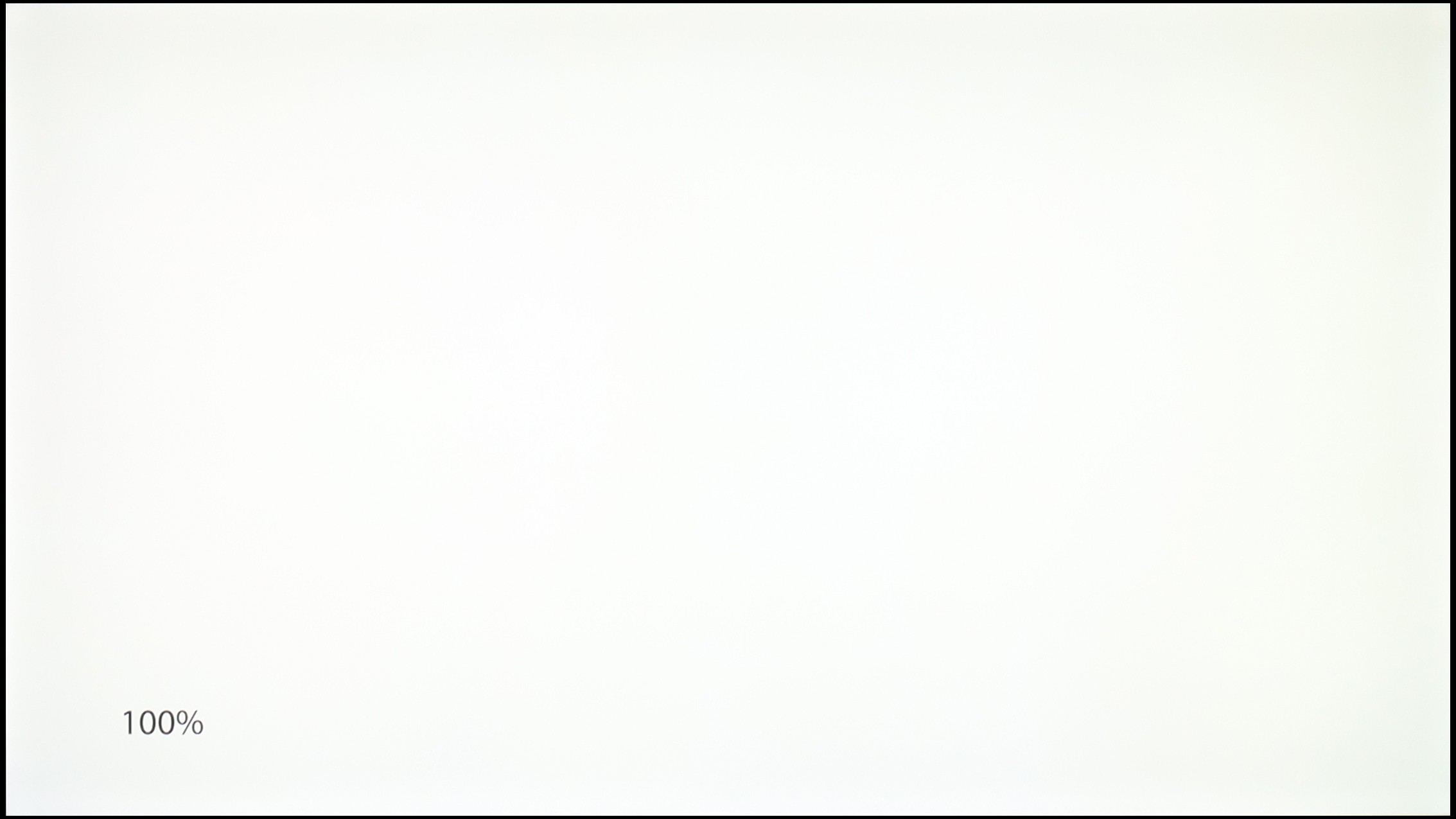
Backlight Type: Mini-LED PFS LED

Founder and originator of the "ChooseTV" portal

Journalist, reviewer, and columnist for the "ChooseTV" portal
See articles related to Hisense E8Q:
1/16/2025
1/16/2025
1/15/2025
Shopping Reviews
Hisense TVs on sale – which 2024 models are worth buying? Bu... 5/28/2025









